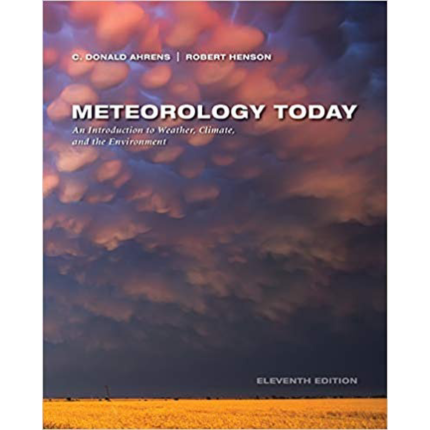Chapter 11 Water: Resources and Pollution
1) ________ is the water that infiltrates through the ground and is stored in spaces in soil and rock.
A) Lateral recharge
B) Rain
C) Water table
D) Surface water
E) Groundwater
Answer: E
Section: 11.01
Topic: Water
Bloom’s: 2. Understand
Chapter: 11
Accessibility: Keyboard Navigation
2) The amount of groundwater that can fill the spaces found in soil and rock is determined by the
A) porosity.
B) zone of saturation.
C) recharge rate.
D) gravity.
E) permeability.
Answer: A
Section: 11.01
Topic: Water
Bloom’s: 2. Understand
Chapter: 11
Accessibility: Keyboard Navigation
3) Based on Figure 11.11, water availability per person per year is lowest in these two countries:
A) Africa and Australia
B) North America and Australia
C) North America and South America
D) Africa and Asia
E) Asia and Australia
Answer: D
Section: 11.03
Topic: Water
Bloom’s: 3. Apply
Chapter: 11
Accessibility: Keyboard Navigation
4) All of the following are example of point source pollution, except
A) drainpipes.
B) sewer outfalls.
C) ditches.
D) effluent pipes.
E) runoff from farms.
Answer: E
Section: 11.03
Topic: Water Pollution
Bloom’s: 3. Apply
Chapter: 11
Accessibility: Keyboard Navigation
5) The total amount of water on the Earth ________ from year to year and the hydrologic cycle ________.
A) stays about the same; moves it from one place to another place
B) increases; captures it from the incoming solar radiation
C) increases; gains water from the Earth’s interior
D) decreases; moves it from one place to another place
E) decreases; loses water to the atmosphere
Answer: A
Section: 11.01
Topic: Water
Bloom’s: 2. Understand
Chapter: 11
Accessibility: Keyboard Navigation
6) Most water in the atmosphere has evaporated from the ocean, and ________ rain falls back into the sea. About ________ % of the earth’s total rain falls on land.
A) most; 10
B) most; 20
C) less; 55
D) less; 70
Answer: A
Section: 11.01
Topic: Water
Bloom’s: 1. Remember
Chapter: 11
Accessibility: Keyboard Navigation
7) The hydrologic compartment that contains the greatest amount of fresh water is
A) groundwater.
B) the Great Lakes.
C) living organisms and biomass.
D) ice and snow.
E) clouds in the atmosphere.
Answer: D
Section: 11.01
Topic: Water
Bloom’s: 1. Remember
Chapter: 11
Accessibility: Keyboard Navigation
8) The place where aquifers are most likely to be contaminated is at
A) artesian springs.
B) seeps and other outlets.
C) recharge zones.
D) all discharge and recharge areas.
E) the zone of aeration.
Answer: C
Section: 11.01
Topic: Water
Bloom’s: 1. Remember
Chapter: 11
Accessibility: Keyboard Navigation
9) A country’s renewable water supplies are generally made up of
A) surface runoff and infiltration into accessible aquifers.
B) seasonal flooding and infiltration into accessible aquifers.
C) seasonal flooding.
D) rivers running through the country.
E) water used from an aquifer.
Answer: A
Section: 11.01
Topic: Water
Bloom’s: 2. Understand
Chapter: 11
Accessibility: Keyboard Navigation
10) Which of the following factors is the most important factor in determining whether a country is “water rich” or “water poor”?
A) population density
B) country size
C) climate
D) rivers running through the country
E) renewable water supplies and population density
Answer: E
Section: 11.03
Topic: Water
Bloom’s: 2. Understand
Chapter: 11
Accessibility: Keyboard Navigation













Reviews
There are no reviews yet.